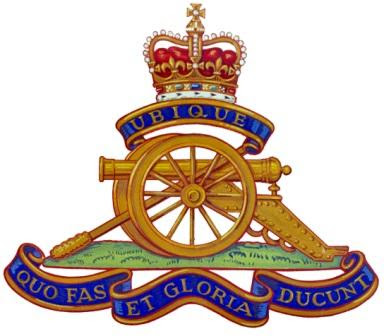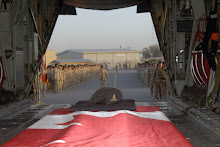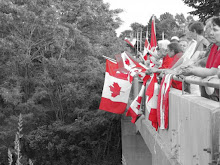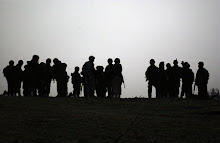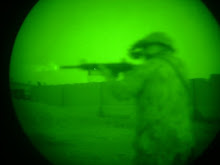Between 1950 and 1953 Canada was involved in a “police action” in Korea. Our country, as part of the United Nations (UN), had dispatched the 25th Canadian Infantry Brigade to help defend embattled South Korea in the face of invasion by Communist North Korea.
[i] South Korea had been saved, but the sudden intervention of over a quarter of a million Red Chinese troops had tipped the balance once again in favour of the Communists.
[ii]By 1952 the front line between the opposing Chinese and U.N. forces was more or less stabilized east to west in the mountains north of the 38th parallel, roughly half-way up the Korean peninsula. The conflict had entered a static phase which would prevail until the conclusion of hostilities and was known as the “twilight war.” The Chinese, though possessing almost limitless manpower, lacked the air power, long range support weapons and sophisticated logistics to affect the conquest of the South. The United Nations, led by the Americans, sought to negotiate a political settlement rather than win an outright military victory. The result was stalemate with the war becoming one of attrition and fixed positions. In this respect the Korean War had come to resemble the Italian Campaign of the Second World War or the Western Front in the First World War. Fighting was bitter and incessant, conducted locally and on an almost primitive level. It was an infantryman’s war!
The Chinese infantryman had proven to be a formidable and at times superior opponent. Hardened by decades of civil war and conflict with the Japanese he was tough, resilient, disciplined, and capable of operating without the lavish service support and fire support that his Western counterpart was so dependant on. The rugged terrain, lack of roads, and extreme weather favoured the qualities inherent in the Chinese soldier.
2. 1RCR in Korea
In April of 1952 1st Battalion, The Royal Canadian Regiment (1RCR) had arrived in Korea to relieve 2RCR.
[iii] Lieutenant-Colonel P.R. Bingham was the Commanding Officer (CO) of 1RCR and had been since December 1948.
[iv] The Battalion would be part of the 25th Canadian Infantry Brigade, along with the first battalions from the Princess Patricia’s Canadian Light Infantry (PPCLI) and the Royal 22nd Regiment (R22eR or the “Vandoos”). The 25th Brigade was commanded by a longtime RCR officer, Brigadier M.P. “Pat” Bogert, DSO.
[v] The Canadian brigade was part of the 1st Commonwealth Division (commanded by Major-General Sir James Cassells and later Major-General Michael Alston-Roberts-West), a predominantly British and Canadian formation, but with Australian and New Zealand components.
[vi] The Commonwealth Division consisted of the 25th Canadian Infantry Brigade, the 28th British Commonwealth Brigade, and the 29th Infantry Brigade (UK). This division was a part of 1st U.S. Corps, an army corps of the U.S. Eighth Army (General James Van Fleet). The 25th Canadian Infantry Brigade occupied 11,000 yards of the front line in a mountainous region known as the Iron Triangle, 50 miles north of the South Korean capital, Seoul. The soldiers of 1RCR were professionals, regular army men and almost all were tough paratroopers (the Battalion had been designated as an airborne unit in May 1949).
By October they had accumulated considerable experience in defensive operations and patrolling against the enemy. Patrols included recce patrols, standing patrols, contact patrols, raids, and ambushes. Another type of patrol was the ‘jitter’ patrol. The purpose of this was to go out in ‘No Man’s Land’ and deliberately draw the fire of the Chinese thereby discovering his exact positions. On one such ‘jitter patrol’ a rather imaginative group of Royals brought musical instruments with them, borrowed from the Corps Drums. Establishing themselves as close as they dared to the enemy lines the Canadians now began their musical serenade. After five minutes of this performance the Chinese unleashed a furious fusillade of mortar, machine gun, and small arms fire. When an enemy bayonet charge seemed imminent the 1RCR patrol withdrew with one man wounded. It seemed the Chinese just couldn’t appreciate the finer points of Western music.
3. 1RCR arrives at Kowang-San
On 10 August, 1RCR relieved the 1st Battalion, The Welch Regiment (29th Infantry Brigade), assuming the defence of Hill 355 or Kowang-San as it was known locally. It was also referred to as ‘Little Gibraltar’ by the Americans. It was a dominating feature and a key to the U.N. Line. Control of Hill 355 conferred control of the highways running south to Seoul. To the immediate left of 1RCR was 1R22eR and to the right was 1PPCLI. Over the next three months the 25th Canadian Infantry Brigade would experience the heaviest shelling and mortaring of any period that it spent in the front lines. The Battalion was opposite a junction point in the enemy lines that marked the boundary between the Chinese 39th and 40th Armies (commanded by Generals Xinquan and Yucheng respectively). On 25 August, from the highest point on Hill 355, Company Sergeant-Major Richard McNally of D Company unfurled the Regimental banner, a challenge that sooner or later would be answered by the Chinese.
The arrival of autumn brought the end of the monsoon and a dramatic change in Chinese tactics. They now possessed artillery and mortars in abundance and were increasingly prepared to use these supporting aggressive attacks on U.N. positions. The Chinese would skillfully infiltrate our lines, isolate an outpost and suddenly overwhelm it. Canadian casualties began to mount, though the blood letting was not all one-sided. During a fighting patrol, mounted by Lieutenant H.R. “Russ” Gardner and five men of B Company, including Corporal K.E. Fowler, a Chinese signaller was snatched from an enemy kitchen area, while five other Chinese soldiers were shot dead. The prisoner proved to be from the 346th Regiment, 116th Division, of the Chinese 39th Army. For this action Gardner was awarded the Military Cross (MC) and Fowler won the Military Medal (MM).
On 01 October the Chinese began a relentless bombardment of Hill 355 that increased rather than decreased in violence as the days passed. Enemy raids and patrols were now probing our main defensive positions on a nightly basis. Kowang-San became so dangerous that American brass stopped visiting it. Chinese prisoners, captured by 1RCR patrols, revealed that an all-out assault on Hill 355 was in the offing.
4. The Fight for Kowang-San
As of 22 October, Hill 355 was divided into five defensive sectors, each held by one of the five rifle companies of 1RCR (the fifth rifle company, E Company, had only recently been raised, in September). Area 2 lay directly between the main feature of Hill 355 and the Chinese-held Hill 227, less than two miles to the west. It was the closest sector to the enemy and the most exposed. Area 2 was forward-centre in the 1RCR defensive line and had borne the brunt of the Chinese bombardment since 01 October.
At this time Area 2 was manned by B Company under the command of Major J.E.L.Cohen. He had deployed his three platoons forward with no company reserve. 4 Platoon commanded by Lieutenant S. MacDonald was on the left and in contact with E Company (Captain H.G. “Herb” Cloutier); 5 Platoon under Lieutenant John Clark was in the centre, and Lieutenant Russ Gardner’s 6 Platoon was on the right and in contact with A Company (Major George G. Taylor). D Company (Major R.S. “Bob” Richards) and C Company were dug in in depth, left-rear and right-rear respectively, and both available as necessary for counter attack. With battle looming, the CO, Lieutenant-Colonel Bingham was on leave and command had devolved on the Deputy Commanding Officer (DCO), Major Frank Klenavic (Klenavic commanded the Battalion from 10-25 October).
[vii]As of last light, 22 October, B Company’s field defences had been reduced to a deplorable state by the continuing Chinese bombardment. Many bunkers had caved in, most of the reserve ammunition buried and telephone lines cut. With enemy mortar and artillery fire continuing to intensify on Area 2 an attack was anticipated that night. As a result B Company remained at 50% alert throughout the night with one man up in each weapon pit while his partner slept. Chinese sappers worked in close to B Company’s positions, destroying wire obstacles with crude bangalore torpedoes.
At 1845 hours (hrs), a Chinese infiltration group blundered into 4 Platoon’s trenches on the left and was shot down to a man. At 2045 hrs A Company, 1st Battalion, The Royal Fusiliers, arrived to take over the defense of Area 5, freeing D Company for a possible counter-move. There was no further contact with the enemy on this night, though the heavy shelling and mortaring continued.
By dawn on 23 October, the situation in Area 2 was precarious in the extreme. All communication with the rear had been cut and enemy shelling had destroyed all of 6 Platoon’s bunkers, forcing the soldiers of this platoon to move to their left and take shelter with 5 Platoon. Lieutenant Gardner assumed command of the two combined platoons and Lieutenant Clark acted as a runner to Company Headquarters (HQ) and Battalion HQ to the rear. The weight of Chinese fire kept B Company pinned down during the day; any movement above ground was next to impossible. As a result, neither food nor ammunition could be pushed forward to the beleaguered platoons of B Company.
At great personal risk Lieutenant Clark finally reached Battalion HQ and advised Major Klenavic of the desperate situation confronting B Company. The acting CO promptly ordered that 5 and 6 Platoons withdraw from their forward positions and re-organize. Major Cohen and Lieutenant Clark made their way to 5 and 6 Platoons to organize their withdrawal. They arrived towards sunset at 1800 hrs.
At this precise moment the enemy barrage on B Company increased dramatically for ten minutes then rolled on to the rear and flanks. A massive Chinese infantry assault on Area 2 was only minutes away and withdrawal was impossible. Major Cohen and Lieutenants Gardner and Clark and Sergeant Gerald E.P. Enright (5 Platoon Sergeant) hurriedly organized the 30 survivors of 5 and 6 Platoons into some semblance of defense. Blocking positions among the shattered trenches were established and men who had lost their weapons organized into bombing parties. Enemy small arms fire was heavy to their front and large numbers of Chinese began to move in from the flanks. Area 2 was now being attacked by the equivalent of two enemy battalions.
On the left 4 Platoon was overwhelmed, the loss of their position being reported to Major Klenavic by survivors at 1830 hrs. On the right Lieutenant Clark and twelve men stubbornly fought on but were eventually forced to take up a blocking position further to the north where B Company’s trenches met A Company’s. They were able to hold this position for the rest of the battle, successfully fighting off swarms of Chinese.
In the centre Lieutenant Gardner and another small band of B Company men fought desperately against hundreds of Chinese attacking from the south. On the verge of being overrun, Gardner ordered his men to make for the safety of A Company’s trenches. He bravely remained to cover their retreat emptying his automatic carbine at the oncoming Chinese. In this action Lieutenant Gardner was repeatedly hit by enemy fire and eventually went down, but not before he personally shot five Chinese soldiers. He pretended to be dead as hundreds of Chinese moved through B Company’s position, ruthlessly bayoneting the bodies of any fallen Canadian soldiers that they found. In the darkness and confusion Lt. Gardner was able to crawl to A Company’s trenches, dragging with him a wounded comrade. They had been the last Canadians alive in Area 2.
By 1943 hours the news had reached Major Klenavic that there were now no friendly troops left in Area 2. He immediately brought down a fire mission on B Company’s former position and ordered every available support weapon in the Battalion, including mortars, machine guns, and recoilless rifles to engage the enemy in Area 2. The heavy and accurate Canadian fire now stopped the Chinese dead in their tracks.
At 2100 hrs developing enemy attacks on A Company in the north and E Company in the south were broken up by artillery salvoes from 1st Commonwealth Division, including A Battery, 1st Royal Canadian Horse Artillery (1RCR had a very special relationship with this particular Battery throughout the tour in Korea). At 0110 hrs, 24 October, Major Klenavic ordered D Company to counter-attack and drive the Chinese from Area 2. The assaulting platoons from D Company were at first heavily engaged but as they pushed home their attack Chinese resistance crumbled and the enemy evaporated into the night. D Company re-occupied Area 2. By 0330 hrs the Battalion’s forward lines had been re-established and the battle was over.
The Battle of Kowang-San, fought between 22 and 24 October, 1952 had lasted 33 hours. In that period 1RCR had suffered 18 killed, 14 missing, and 35 wounded. Enemy casualties were unknown but believed extremely heavy. In fact, in the aftermath of the battle, helicopter observers counted up to six hundred Chinese bodies scattered across the battlefield. As a result of the action at Kowang-San soldiers of the Battalion won three Military Crosses and four Military Medals for gallantry. The Military Crosses were won by acting Major George Taylor, OC of A Company; Captain Cloutier, commanding E Company; and by Lieutenant Clark of 5 Platoon, B Company. It is also worth noting that for his sterling service as the Forward Observation Officer (FOO) during the battle, Captain D.S. Caldwell was also awarded the MC. Sergeant Enright, also of 5 Platoon, was one of the recipients of the Military Medal (MM), as was Warrant Officer 2nd Class (WO2) George Fox, CSM of E Company. For his strong leadership throughout the battle Major Klenavic won the award of Member of the Order of the British Empire (MBE). At the conclusion of the Battalion’s tour in Korea, Lieutenant-Colonel Bingham would be awarded the Distinguished Service Order (DSO), in recognition of the outstanding achievements of 1RCR over the past 11 months.
The defence of Hill 355 had been the bloodiest and most significant action fought by 1st Battalion, The Royal Canadian Regiment during its eleven month combat tour in Korea. Throughout this period, the Battalion would suffer a total of 282 casualties, including 51 killed in action, 204 wounded, and 14 taken prisoner. The Korean War, 1950-53 had only been the second occasion in its history that The RCR became a three battalion regiment (the first being during the South African war, 1899-1902). Each Battalion in its own turn would serve a combat tour in the theatre of conflict. Total casualties suffered by the Regiment in Korea were 117 killed and 408 wounded.
The Korean tour for 1st Battalion, The Royal Canadian Regiment ended officially on 25 March, 1953. This event was marked by a handover with its sister Battalion, 3RCR. On an earlier date, 01 November, 1952, 1RCR had been relieved in the line by the 1st Battalion, The Royal Australian Regiment (28th British Commonwealth Brigade), following the successful defence of Kowang-San. On that occasion, the Regimental banner of The RCR, tattered and stained, nevertheless still flew proudly from the highest point on Hill 355. Once again, the proud traditions of The Royal Canadian Regiment had been upheld.
[i] North Korean forces, in an act of unprovoked aggression, invaded South Korea (the Republic of Korea) on 25 June 1950. This conflict, referred to in the West not as a war, but as a police action, was only concluded three years later on 27 July 1953, with the signing of an armistice at Panmunjom
[ii] Chinese forces in Korea were part of the Chinese People’s Volunteer Army (PVA), as distinct from the People’s Liberation Army (PLA). The PVA, created on 23 November 1950, was commanded by Marshal Peng Dehuai (P’eng Te-huai), generally regarded as China’s ablest field commander of the day and subsequently Chinese Minister of Defence, 1954-59. He was a onetime Kuomintang brigade commander, but a Communist soldier since 1927. Like most senior PVA officers, Peng was a veteran of the Chinese Civil War (1927-49) and had seen extensive action against the Japanese during the Second World War (i.e. Second Sino-Japanese War, 1937-45). During the period of the Korean War, 25 June 1950 – 27 July 1953, some 2.3 million Chinese troops were deployed to Korea. Of these, it is estimated by Western sources that about 400,000 were killed and a further 486,000 wounded. The Chinese themselves admit to 148,000 killed, 380,000 wounded, and 29,000 missing (including 21,400 taken prisoner). Peak strength of the PVA at any given time was 270,000 men. The PVA consisted of two army groups, the 13th Army Group and the 9th Army Group, including a total of 30 infantry divisions. The 13th Army Group, commanded by General Yongsheng, with 150,000 men and 18 infantry divisions, was comprised of six armies (with three divisions in each army): 38th Army (General Xingchu); 39th Army (General Xinquan); 40th Army (General Yucheng); 42nd Army (General Riulin); 50th Army (General Zesheng); and 66th Army (General Su Ching-huai). Additionally there were three motorized artillery divisions (the 1st, 2nd, and 8th), each consisting of three artillery regiments. The 9th Army Group, commanded by General Shilun, with 120,000 and 12 infantry divisions, was organized in three armies (each with four divisions): 20th Army (General Fei); 26th Army (General Renchu); and 27th Army (General Fengzhi). In the PVA an army group was in fact equivalent to an army, an army to an army corps. Each infantry division was comprised of three infantry regiments (each regiment the equivalent of a brigade).
[iii] On 07 August 1950, the Department of National Defence (DND) announced the creation of a Special Force consisting of additional or second battalions of the existing Permanent Force battalions of The Royal Canadian Regiment (RCR), the Princess Patricia’s Canadian Light Infantry (PPCLI), and the Royal 22nd Regiment (R22eR). These Special Force units (i.e. 2RCR, 2PPCLI, and 2R22eR) once organized and trained, would be dispatched to Korea as the 25th Canadian Infantry Brigade (initially commanded by Brigadier J.M. Rockingham, MBE, DSO). The Permanent Force units would therefore become the first battalions of their Regiments. These regular battalions would initially remain in Canada constituting the Mobile Striking Force and eventually rotate with the Special Force battalions. Thus, The RCR became a multi-battalion regiment for only the second time in its history (the South African War, 1899-1902, marked the first occasion when there were three battalions serving concurrently: the Permanent Force battalion remained in Canada; the 2nd Battalion, The Royal Canadian Regiment of Infantry served overseas in South Africa and was in existance from October 1899 until December 1900; and a third battalion came into being to provide a garrison for the Citadel in Halifax during the war; the second occasion occurred briefly towards the end of the Second World when a second battalion of The RCR was raised to fight the Japanese as part of Pacific Force; the Japanese surrendered before the Force could deploy to the Far East). The Special Force men were recruited for a fixed period of 18 months. The Second Battalion, The Royal Canadian Regiment was quickly raised in Petawawa and by 17 August consisted of 1,203 all ranks. Many of the officers and non-commissioned officers (NCOs) came from the Permanent Force. Some two-thirds of the enlistees had served during the Second World War. On 25 August 1950 Lieutenant-Colonel R.A. Keane, DSO, took command of 2RCR. He too was a war veteran of thr war and had served with distinction in the First Special Service Force. After training at Fort Lewis, Washington, 2RCR sailed for Korea, arriving at the port of Pusan on 05 May 1951. This Battalion remained in Korea until relieved by 1RCR from 21-23 April 1952.
[iv] Bingham had enlisted in D Company, The RCR, at St.-Jean, Quebec in 1931. In the early days of the Second World War, on 22 December 1939, Warrant Officer 2nd Class Bingham had sailed with the Regiment from Halifax to England as Company Sergeant-Major (CSM) of Headquarter Company. By August 1940 he had been selected for officer candidate training and was eventually commissioned. By the end of the war Bingham was a lieutenant-colonel sewrving on the staff of First Canadian Army. Interestingly, Bingham had also served with British 14th Army in Burma during 1944. Lieutenant-Colonel Bingham would be awarded the Distinguished Servcice Order (DSO) for his leadership of 1RCR in the field during the tour in Korea.
[v] Lieutenant Bogert had been a subaltern in The RCR in 1934 along with Charles Foulkes, Ralph Crowe, and Dan Spry; later, during the Second World War, Bogert had been Officer Commanding (OC) D Company, The RCR, in England, had then become CO of the West Nova Scotia Regiment in Italy, where he had been wounded in action, and finally commanded the 2nd Canadian Infantry Brigade from October 1944 until June 1945, first in Italy, then in Holland. Brigadier Bogert would be awarded the DSO for his tenure of command of the 25th Canadian Infantry Brigade in Korea.
[vi] 1st Commonwealth Division, as of June 1952, consisted of the following units and formations:
5th Royal Inniskilling Dragoon Guards
B Squadron, Lord Strathcona’s Horse (LDSH)
1st Regiment, Royal Canadian Horse Artillery (1RCHA)
14th Field Regiment, Royal Artillery (RA)
16th New Zealand (NZ) Field Regiment
61st Light Regiment, Royal Artillery (RA)
25th Canadian Infantry Brigade: 1RCR, 1PPCLI, 1R22eR.
28th British Commonwealth Brigade: 1st Battalion, King’s Own Scottish Borderers (1KOSB), 1st Battalion,
King’s Shropshire Light Infantry (1KSLI), 1st Battalion, Royal Australian Regiment (1RAR), and
3rd Battalion, Royal Australian Regiment (3RAR).
29th Infantry Brigade (UK): 1st Battalion, Royal Norfolk Regiment (1RNR), 1st Battalion, The Welch Regiment
1st Battalion, The Black Watch (Royal Highland Regiment).
1st Commonwealth Division Signals
[vii] In 1933 Klenavic had been a private with B Company in Toronto and by 1936 was a corporal. At the outbreak of the Second World War he had proceeded overseas with the RCR in December 1939 as a Platoon Sergeant-Major with the rank of Warrant Officer 3rd Class. In August 1940, along with Lieutenant-Colonel Bingham, he had been selected for officer candidate training and been commissioned. In November 1942, Captain Klenavic was attached to the British First Army in Tunisia for a three month period. This was part of a programme whereby Canadian officers and NCOs could gain battle experience with British units. Klenavic thus became the first member of the Regiment to see combat in the Second World War (Captain Strome Galloway would also serve with the British in North Africa prior to the invasion of Sicily)). He had risen to the rank of Major by the war’s end.
By Capt Ross A. Appleton
 Experience Wanted:
Experience Wanted:





.jpg)



